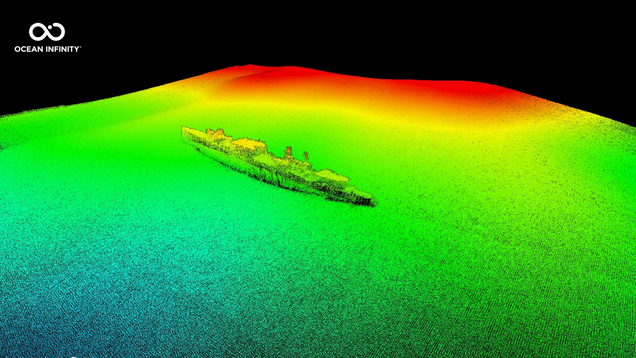Discovery of the U.S.S. Stewart: Unraveling the Mystery of a WWII Ghost Ship
The recent discovery of the U.S.S. Stewart, a ghost ship that had been missing since its capture by the Japanese Navy during World War II, has captivated historians and maritime enthusiasts alike. Located on the bed of the Pacific Ocean, this ship’s unearthing after nearly 80 years raises numerous questions about its history, the technology used in its discovery, and the implications of such findings for our understanding of maritime warfare.
Understanding the Historical Context of the U.S.S. Stewart
The U.S.S. Stewart was a Clemson-class destroyer escort that served the United States Navy during World War II. Commissioned in the early 1920s, the ship played a significant role in various naval operations before it was captured in 1942. Its disappearance has long been a point of intrigue, as it symbolizes the many vessels lost during the tumultuous years of the war. The ship’s capture and subsequent fate remained a mystery for decades, making its recent discovery a significant event in maritime history.
The Importance of the U.S.S. Stewart’s Discovery
The discovery of the U.S.S. Stewart is not merely a historical footnote; it serves as a reminder of the vast number of ships that were lost during World War II. According to the U.S. Naval History and Heritage Command, thousands of naval vessels were sunk or captured during the conflict, many of which have yet to be located. The U.S.S. Stewart’s identification contributes to a broader understanding of naval warfare’s impact and the sacrifices made by those who served.
Technological Innovations in Underwater Exploration
One of the most remarkable aspects of this discovery is the technology employed by the team of scientists who located the ship. Utilizing a fleet of autonomous submarines equipped with advanced sonar and imaging technology, researchers were able to scan the ocean floor with unprecedented precision. This innovative approach not only facilitated the discovery of the U.S.S. Stewart but also sets a precedent for future underwater explorations.
Recent studies in marine archaeology highlight the effectiveness of autonomous vehicles in locating shipwrecks. For instance, a 2022 study published in the Journal of Marine Science demonstrated that autonomous underwater vehicles (AUVs) could cover vast areas of the ocean floor more efficiently than traditional methods. The successful identification of the U.S.S. Stewart underscores the potential of these technologies in uncovering lost maritime history.
Implications for Maritime Heritage and Preservation
The discovery of the U.S.S. Stewart raises important questions about the preservation of maritime heritage. Shipwrecks serve as time capsules, offering insights into the past and the technological advancements of their era. However, they also face threats from environmental degradation and human activity. As more vessels are discovered, it becomes crucial to establish guidelines for their protection and study.
Experts in maritime archaeology advocate for a balanced approach that allows for exploration while ensuring the preservation of these historical sites. The U.S.S. Stewart’s discovery could serve as a case study for developing best practices in underwater archaeology, emphasizing the need for collaboration between scientists, historians, and conservationists.
Engaging the Public: The Story of the U.S.S. Stewart
The story of the U.S.S. Stewart is not just one of historical significance; it is also a narrative that can engage the public’s interest in maritime history. Educational programs and exhibitions can be developed to share the ship’s story, highlighting its role in World War II and the technological advancements that led to its discovery. By fostering a connection between the public and maritime heritage, we can cultivate a greater appreciation for the sacrifices made by those who served in the Navy.
Incorporating interactive elements, such as virtual reality experiences that allow individuals to explore the U.S.S. Stewart’s wreck site, could further enhance public engagement. Such initiatives not only educate but also inspire future generations to take an interest in maritime history and conservation.
The Legacy of the U.S.S. Stewart
As we reflect on the discovery of the U.S.S. Stewart, it is essential to recognize its legacy. This ghost ship serves as a reminder of the countless stories that remain hidden beneath the waves, waiting to be uncovered. The advancements in technology that made this discovery possible open new avenues for exploration, allowing us to delve deeper into our maritime past.
Moreover, the U.S.S. Stewart’s story is a testament to the resilience of those who served during World War II. It embodies the sacrifices made by countless individuals and the enduring impact of their experiences on our collective history. As we continue to explore the depths of the ocean, we must remain committed to preserving these narratives, ensuring that the lessons of the past are not forgotten.

